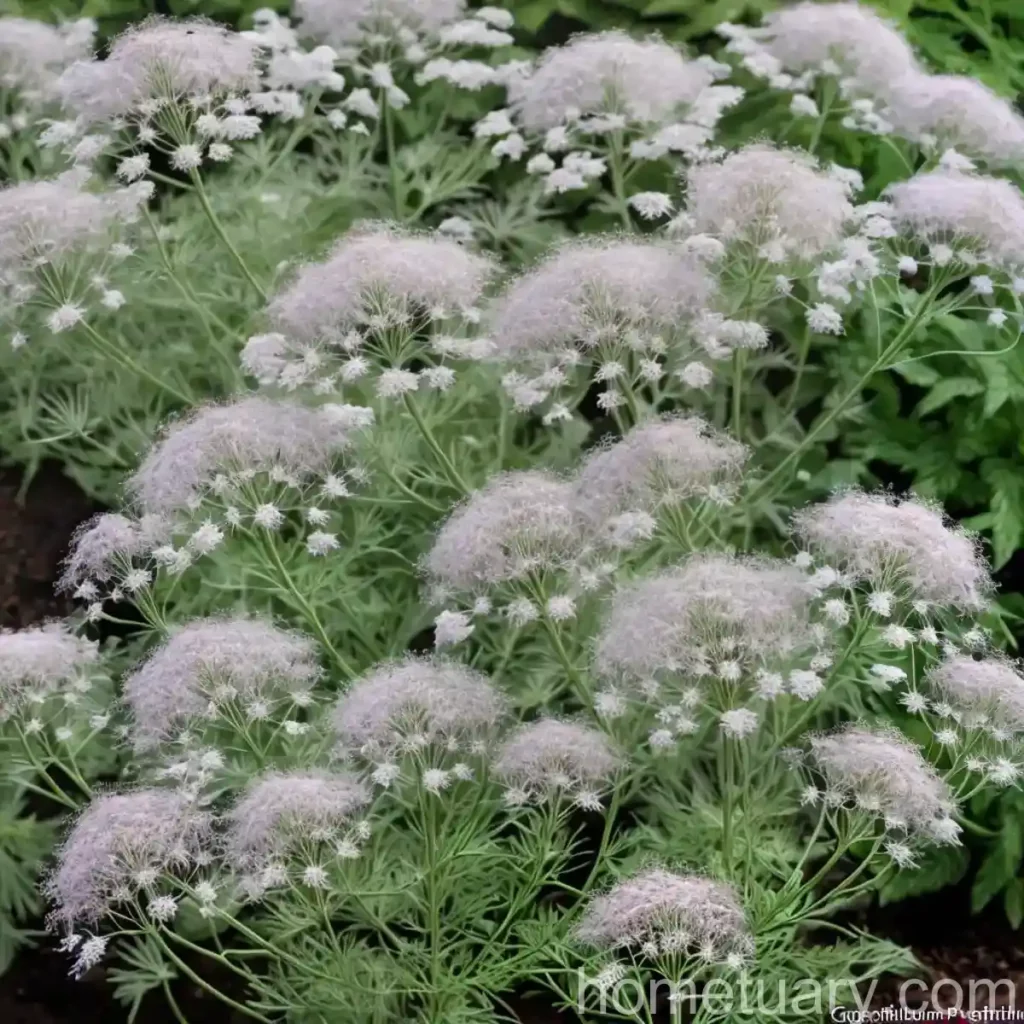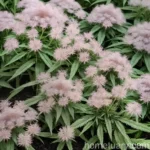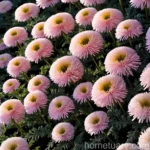Dogfennel (Eupatorium capillifolium): A Comprehensive Guide
In the world of horticulture, the diverse range of plant species never fails to surprise us. While some plants are popular for their vibrant flowers, others are appreciated for their unique foliage, and a few are valued for their medicinal properties. Dogfennel (Eupatorium capillifolium) falls into the latter category, offering not only ornamental value but also medicinal benefits. In this guide, we will delve into the various aspects of dogfennel, from its culture and uses to its habitat and folklore. Whether you are a seasoned gardener or a novice enthusiast, this comprehensive resource will provide you with valuable insights into the world of dogfennel.
What is Dogfennel (Eupatorium capillifolium)?
Dogfennel, scientifically known as Eupatorium capillifolium, is a perennial herbaceous plant that belongs to the Asteraceae family. It is native to the southeastern United States and is known by various common names, including dogfennel, cypressweed, and sneezeweed. The plant is characterized by its finely dissected, fern-like foliage and clusters of small, white flowers that bloom in late summer and fall.
Key Takeaways – Dogfennel (Eupatorium capillifolium)
Before we delve deeper into the intricacies of dogfennel, let’s take a quick look at the key takeaways regarding this fascinating plant:
- Scientific Name: Eupatorium capillifolium
- Common Names: Dogfennel, Cypressweed, Sneezeweed
- Uses: Medicinal and Ornamental
- Habitat: Southeastern United States
- Characteristics: Fern-like foliage, Clusters of Small White Flowers
- Cultural Significance: Folklore, Traditional Medicine
- Gardening Tips: Natural Pest Control, Herbal Uses
- Environmental Benefits: Natural Insect Repellent, Ecological Importance
Now that we have a brief overview of dogfennel, let’s explore its culture, uses, and various aspects of care and maintenance in greater detail.
Culture of Dogfennel
Understanding the cultural requirements of dogfennel is essential for successfully growing and maintaining this plant. From its preferred soil conditions to its adaptability to different light levels, let’s explore the cultural aspects of dogfennel.
Uses
Dogfennel is a versatile plant with several practical uses, making it a valuable addition to any garden or landscape. The primary uses of dogfennel include:
- Medicinal Applications
- Ornamental Purposes
Medicinal Uses of Dogfennel
One of the most intriguing aspects of dogfennel is its medicinal properties. The plant has a rich history of traditional uses for various ailments, and its potential health benefits have been recognized for centuries. From herbal remedies to folklore beliefs, dogfennel holds a special place in traditional medicine and cultural practices.
Dogfennel Medicinal Properties and Uses
- Respiratory Health: Dogfennel has been used in traditional medicine for its purported benefits in respiratory health. It is believed to have properties that support respiratory function and overall lung health.
- Digestive Support: In some traditional remedies, dogfennel is used to aid in digestion and alleviate digestive discomfort. Its use in promoting digestive wellness is deeply rooted in folklore and traditional healing practices.
- Skin Care: The plant is also believed to have potential benefits for skin health. Its extracts have been used in various natural skincare formulations for their purported soothing and rejuvenating properties.
Ornamental Uses of Dogfennel
In addition to its medicinal significance, dogfennel is also valued for its ornamental appeal. The finely divided foliage and delicate clusters of flowers make it an attractive addition to gardens and natural landscapes. Its ornamental uses include:
- Wildflower Gardens: Dogfennel is often incorporated into wildflower gardens and naturalistic landscapes, adding texture and visual interest.
- Butterfly and Pollinator Gardens: The nectar-rich flowers of dogfennel attract butterflies, bees, and other pollinators, making it a beneficial plant for supporting local ecosystems.
Now that we have explored the uses of dogfennel, let’s shift our focus to its specific cultural requirements in terms of water, sunlight, soil, and fertilizer.
Water
Proper watering is essential for the health and vigor of dogfennel. Understanding the plant’s water needs and implementing appropriate watering practices is crucial for its overall well-being.
- Watering Needs: Dogfennel prefers moist, well-drained soil and benefits from regular watering, especially during periods of drought.
- Establishment Period: Newly planted dogfennel should be watered consistently to help it establish a strong root system.
Sunlight
As with most plants, sunlight plays a critical role in the growth and development of dogfennel. Understanding its sunlight requirements is essential for determining the ideal location for planting.
- Light Requirements: Dogfennel thrives in full sun to partial shade, making it adaptable to various light conditions. However, it tends to produce more robust growth and abundant flowers in full sun.
- Shade Tolerance: While dogfennel can tolerate partial shade, prolonged exposure to dense shade may result in reduced flowering and overall vigor.
Fertilizer
Proper nutrition is key to promoting the health and vitality of dogfennel. Fertilizing the plant at the right time and with the appropriate nutrients can enhance its performance in the garden.
- Fertilization Schedule: Dogfennel generally benefits from a balanced, slow-release fertilizer applied in early spring to support its growth and flowering.
- Organic Amendments: Incorporating organic matter into the soil can improve its fertility and structure, providing a favorable environment for dogfennel to thrive.
Soil
The soil composition and quality play a crucial role in the overall health and resilience of dogfennel. Understanding its soil preferences can help create an optimal growing environment.
- Well-Drained Soil: Dogfennel thrives in well-drained, moderately fertile soil. It is important to avoid waterlogged conditions, as excessive moisture can lead to root rot and other issues.
- Soil pH: The plant prefers a slightly acidic to neutral soil pH, typically in the range of 6.0 to 7.0. Amending the soil to achieve the ideal pH can benefit the plant’s nutrient uptake and overall performance.
Pruning
Pruning is an important aspect of dogfennel maintenance, helping to promote a tidy appearance and prevent the plant from becoming overly aggressive in the garden.
- Deadheading: Removing spent flowers can prolong the blooming period and prevent self-seeding in the garden, particularly if naturalization is not desired.
- Thinning: Thinning out overcrowded stems can enhance air circulation and reduce the risk of disease, promoting overall plant health.
Propagation
For those interested in expanding their dogfennel population or sharing the plant with others, understanding the various methods of propagation is valuable.
- Seed Propagation: Dogfennel can be propagated from seeds, though natural self-seeding can also occur under favorable conditions.
- Division: Dividing mature clumps of dogfennel in early spring allows for the creation of new plants and helps rejuvenate established specimens.
Container Popularity
While dogfennel is commonly grown in garden beds and naturalized areas, its potential for container gardening should not be overlooked.
- Container Selection: Choose a large, sturdy container with adequate drainage for growing dogfennel in a container. The plant’s expansive root system benefits from ample space to grow.
- Container Companions: Dogfennel can be paired with other attractive container plants, creating visually appealing combinations and enhancing the overall aesthetic.
Common Diseases and Pests
Despite its resilience, dogfennel is not entirely immune to certain diseases and pest pressures. Understanding the potential challenges and proactive measures for disease management and pest control is crucial for preserving the health of the plant.
Disease Diagnosis
Two common diseases that may affect dogfennel are powdery mildew and rust. Proper diagnosis and timely intervention are essential for addressing these issues effectively.
- Powdery Mildew: This fungal disease can result in the development of a white, powdery coating on the plant’s foliage, affecting its overall aesthetic appeal and potentially impeding photosynthesis.
- Rust: Rust appears as orange to reddish-brown pustules on the undersides of leaves, often leading to premature leaf drop and reduced plant vigor.
Common Pests
Dogfennel may also encounter certain insect pests, such as aphids and whiteflies, which can impact its growth and overall vitality.
- Aphids: These small, pear-shaped insects feed on the sap of the plant, potentially causing distortion of new growth and the transmission of plant diseases.
- Whiteflies: Whiteflies are tiny, winged insects that can congregate on the undersides of leaves, feeding on plant sap and excreting honeydew, which can attract sooty mold and compromise plant health.
Understanding the signs of infestation and implementing appropriate pest management strategies is essential for minimizing the impact of these pests on dogfennel.
Botanist’s Tips
To conclude our exploration of dogfennel, let’s consider a few botanist’s tips for successfully growing and appreciating this unique plant:
- Native Habitat: Understanding the native habitat of dogfennel can provide valuable insights into its preferred growing conditions and cultural significance.
- Planting Tips: When planting dogfennel, give careful consideration to its water, sunlight, and soil requirements to ensure a favorable environment for its growth.
- Environmental Benefits: Recognizing the ecological importance of dogfennel as a natural pest control agent and its potential contributions to local ecosystems.
Fun Facts
Before we wrap up our guide, let’s highlight a few fun and intriguing facts about dogfennel:
- Folklore Beliefs: Dogfennel has been associated with various folklore traditions and beliefs, adding an element of cultural significance to its presence in gardens and natural landscapes.
- Mythical Legends: In some cultures, dogfennel has been linked to mythical legends and stories, further enhancing its historical and cultural significance.
Links to External Resources
For further information and resources on dogfennel, consider exploring the following links:
- Planting and Care Tips for Dogfennel
- Traditional Uses of Dogfennel in Herbal Remedies
- Cultural Significance of Dogfennel in Folklore
- Medicinal Properties and Ethnobotanical Uses of Dogfennel
- Environmental Benefits of Dogfennel in Gardens and Landscapes
In conclusion, dogfennel (Eupatorium capillifolium) is a plant that encompasses not only ornamental beauty but also a rich history of folklore, traditional uses, and potential health benefits. From its cultural significance to its ecological contributions, dogfennel holds a special place in the world of plants, offering a multifaceted and intriguing presence in gardens and natural environments.
With a deeper understanding of its culture, uses, and various aspects of care, enthusiasts and horticulturalists alike can appreciate and cultivate dogfennel with a newfound sense of admiration and respect for this captivating plant.
Whether you are drawn to its delicate flowers, finely divided foliage, or its intricate connection to cultural traditions, dogfennel invites us to explore the intersection of nature, folklore, and medicine, highlighting the interconnectedness of plants and human culture throughout history.















